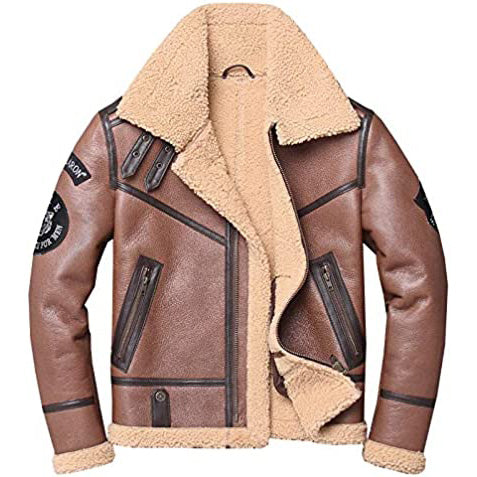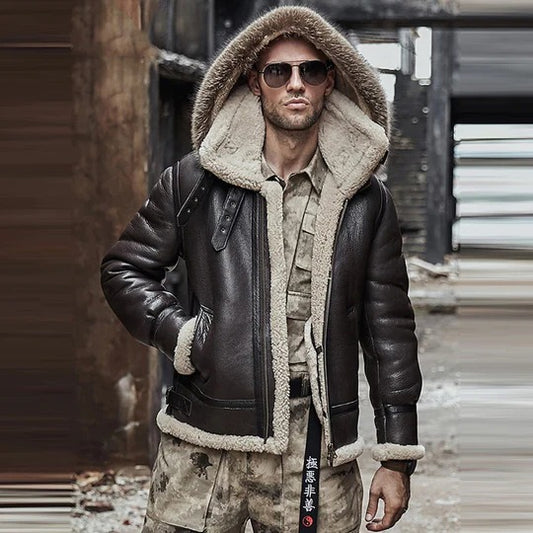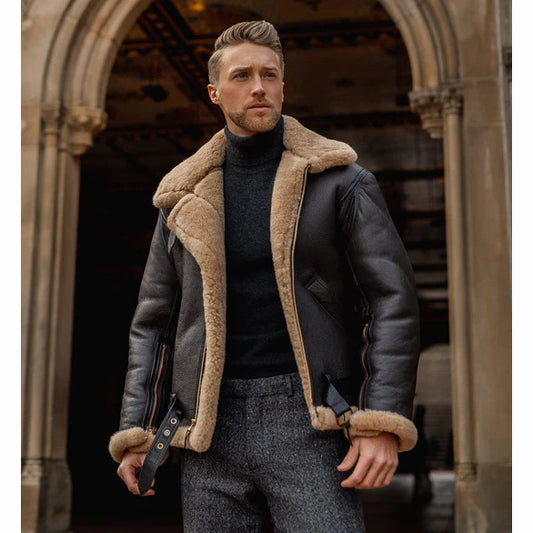Sheepskin leather is one of the most luxurious, comfortable, and versatile materials used in fashion and upholstery. It’s a favorite for jackets, boots, gloves, and home decor due to its unique properties and natural softness. But what exactly is sheepskin leather? Why is it so popular, and is it the right choice for you? In this guide, we'll explore everything you need to know about sheepskin leather, from its origins to its pros and cons, and even how to take care of it.
1. What is Sheepskin Leather?
Sheepskin leather, also known as lambskin, comes from the hide of sheep. Unlike other leathers, sheepskin retains the wool of the sheep, giving it a soft, plush feel on one side and a smooth leather texture on the other. This dual texture makes sheepskin unique and highly sought after for clothing and accessories.
Key Characteristics:
- Softness: Naturally soft and luxurious to the touch.
- Lightweight: Sheepskin leather is lighter compared to cowhide, making it more comfortable for everyday wear.
- Flexibility: Extremely flexible and molds to the shape of your body over time.
2. How is Sheepskin Leather Made?
The production of sheepskin leather involves several steps. Here's a brief overview of the process:
Step 1: Selection
High-quality sheepskins are carefully chosen based on their thickness, wool density, and condition.
Step 2: Tanning
The hides undergo a tanning process to preserve them. Tanning can be done using various methods, with vegetable tanning being the most eco-friendly.
Step 3: Wool Processing
After tanning, the wool is cleaned, conditioned, and trimmed to the desired length.
Step 4: Finishing
The leather side is smoothed, dyed, and sometimes treated for extra durability.
3. Characteristics of Sheepskin Leather
Sheepskin leather is known for its breathability, water resistance, and natural warmth. The wool side helps regulate body temperature, while the leather side provides a weather-resistant layer.
Notable Characteristics:
- Breathable: Keeps you warm in winter and cool in summer.
- Moisture-wicking: Wool fibers absorb moisture without feeling wet.
- Durable: Properly cared-for sheepskin leather can last for decades.
4. Uses of Sheepskin Leather
Sheepskin leather is commonly used for:
- Clothing: Jackets, coats, gloves, and hats.
- Footwear: Boots and slippers.
- Accessories: Bags, wallets, and car seat covers.
- Home Decor: Rugs and cushions.
5. Pros and Cons of Sheepskin Leather
Pros:
- Comfortable: Soft and luxurious feel.
- Lightweight: Ideal for everyday wear.
- Flexible: Molds to your body over time.
- Temperature-regulating: Keeps you comfortable in various climates.
Cons:
- Less Durable than Cowhide: Sheepskin is softer and can be prone to tears if not treated carefully.
- Expensive: High-quality sheepskin leather can be pricey.
6. How to Care for Sheepskin Leather
Caring for sheepskin leather is essential to keep it looking its best for years. Follow these simple steps:
- Avoid Moisture: Sheepskin is water-resistant but not waterproof. Keep it away from heavy rain.
- Brush Regularly: Use a soft brush to maintain the wool side.
- Spot Clean: Use a damp cloth and mild soap to clean minor stains.
- Store Properly: Keep your sheepskin items in a cool, dry place.
7. Sheepskin Leather vs. Cowhide Leather: A Comparative Analysis
Durability
Cowhide leather is more durable and rigid, ideal for rough use. Sheepskin leather, on the other hand, is softer and more flexible.
Weight
Sheepskin leather is lighter, making it more comfortable for garments and accessories.
Texture
Sheepskin has a plush texture due to the wool, whereas cowhide is smooth on both sides.
8. Best Occasions to Wear Sheepskin Leather
- Casual Outings: Sheepskin jackets add style and comfort.
- Cold Weather: Perfect for winter due to its natural insulation.
- Formal Events: Sheepskin coats can be dressed up with formal attire.
9. Conclusion
Sheepskin leather is an excellent choice for those who value comfort, luxury, and versatility. While it may not be as durable as cowhide, its unique properties make it a popular option for jackets, gloves, and even home decor. By understanding its characteristics and how to care for it, you can enjoy sheepskin leather for years to come.
10. Frequently Asked Questions (FAQs)
Q1. Is sheepskin leather real leather?
Yes, sheepskin leather is real leather made from the hide of sheep, with the wool left intact for added softness and insulation.
Q2. Is sheepskin leather waterproof?
Sheepskin leather is water-resistant but not fully waterproof. It’s best to avoid heavy rain.
Q3. How do you clean sheepskin leather?
You can clean sheepskin leather by gently brushing the wool side and spot-cleaning the leather side with a damp cloth and mild soap.
Q4. Can you wear sheepskin leather in summer?
Yes, sheepskin leather is breathable and regulates body temperature, making it suitable for both summer and winter wear.
Q5. Is sheepskin leather ethical?
Sheepskin leather is often a byproduct of the meat industry, making it a more sustainable choice compared to synthetic materials.




